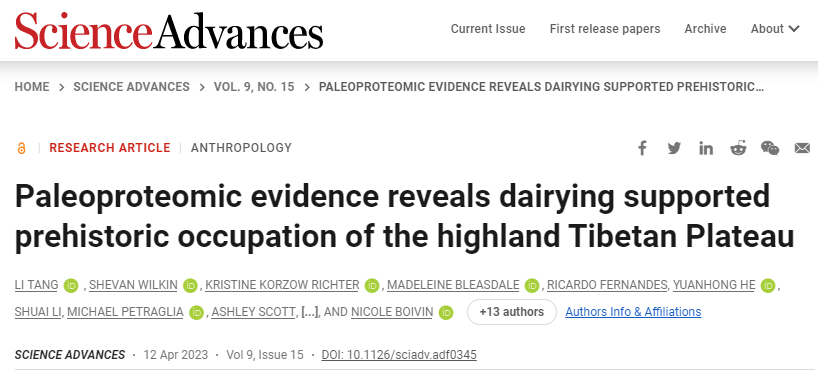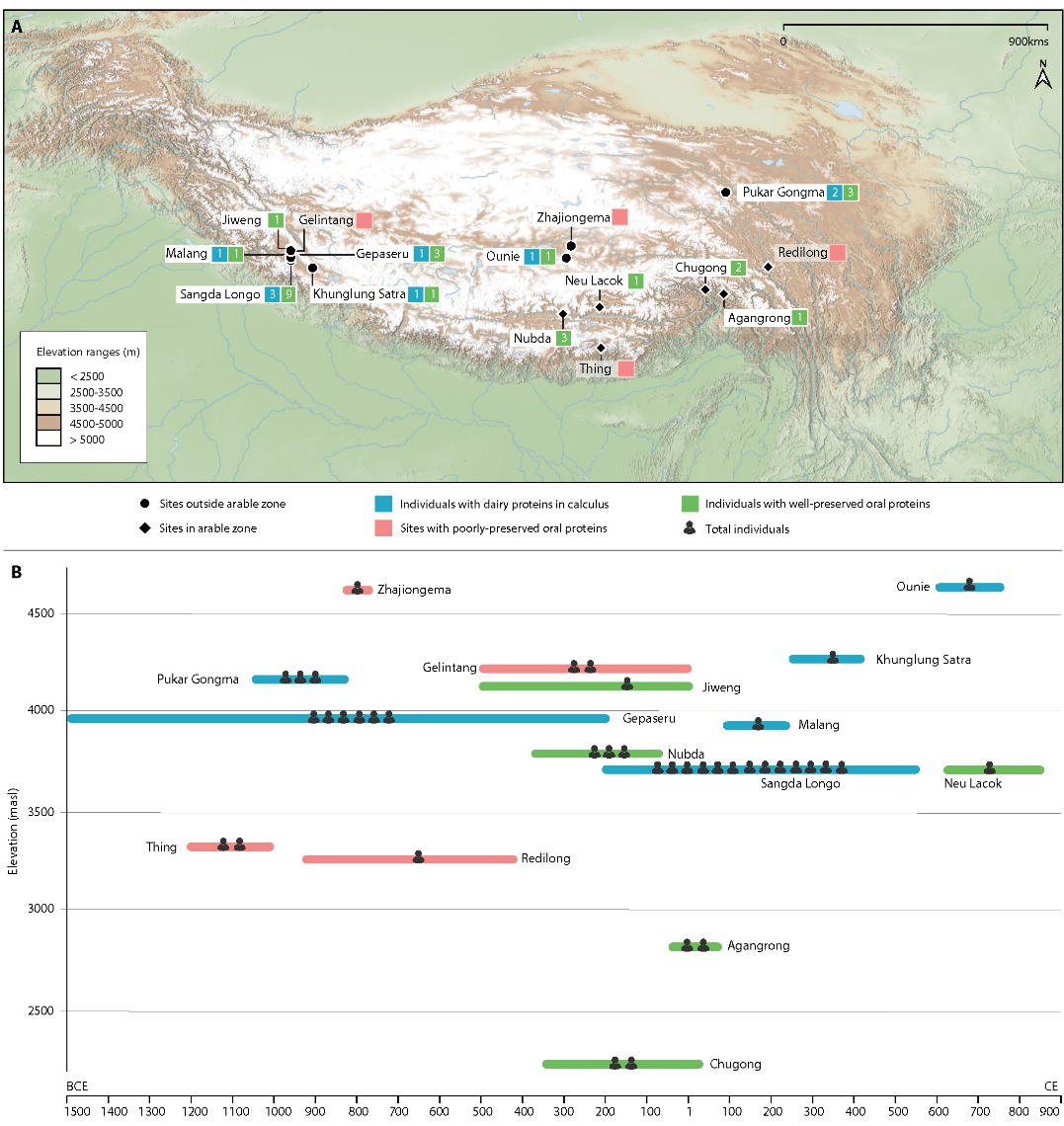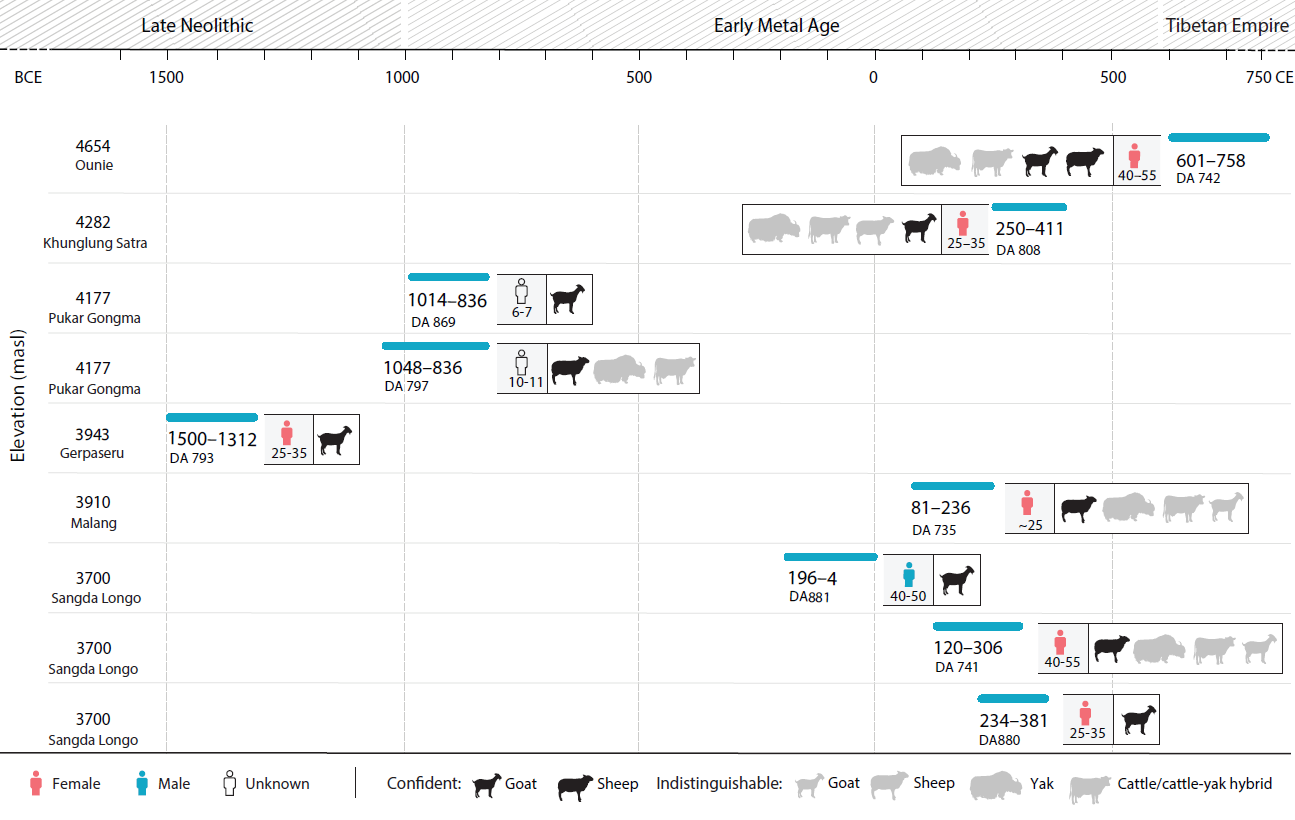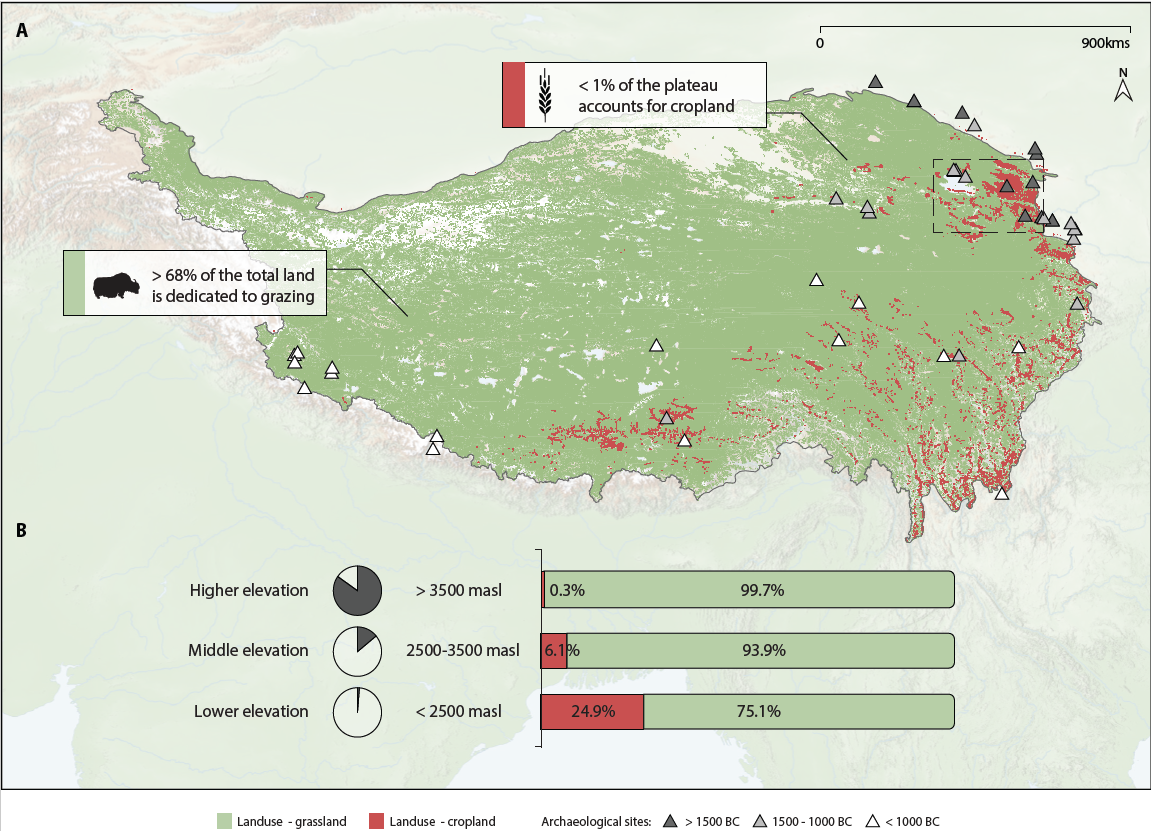
Professor Hongliang Lv's research team from the Center for Archaeological Science has made new discoveries in collaborative research with institutions such as the Tibetan Cultural Relics Conservation Institute and the Max PlanckInstitute for the Science of Human History, Germany. The findingswere published in Science Advances under the title of “Palaeoproteomic Evidence Reveals Dairying Supported Prehistoric Occupation of the Highland Tibetan Plateau” on April 12.
Hongliang Lv is a co corresponding author of the paper; and Li Tang, a master degree graduate of Hongliang Lv, is the first author of the paper.This research was funded by the Max Planck Society, the Tibetan Cultural Relics Conservation Institute, the Research Program of Key Research Bases in Humanities and Social Sciences, National Key R&D Program of China (2021YFC1523600) and so forth.

Fig.1. Map, chronology, and elevation of samples included in this study and protein results for studied individuals.
(A) Distribution of sites investigated in the present study and preservation of milk and oral proteins for individuals from those sites (table S2 and datasets S2 and S3). (B) Timeline and elevation of studied samples, total number of human individuals from each site, and protein preservation and dairy recovery from their calculus (text S2 and dataset S2).
The Tibetan Plateau, as the world’s highest and largest plateau, represents one of the most inhospitable global environments to which humans have adapted. Referred to as the “third pole,” the high mountain region has more snow and ice than anywhere on Earth except for the north and south poles. “--- Previous research suggests that crop cultivation based on frost-tolerant barley was one of the critical adaptative strategies enabling more sustained habitation of the Tibetan Plateau, facilitating its permanent occupation by around 3600 years ago. --- Archaeologists have found evidence of successful barley farming in these higher-elevation regions, but only in limited warm valleys. How prehistoric populations adapted to the remainder of the vast, agriculturally poor highlands of the Tibetan Plateau remains an open question.” (Introduction)

Fig. 2. Proteomic evidence of dairy products in dental calculus from the interior Tibetan Plateau.
“The extreme environments of the Tibetan Plateau offer considerable challenges to human survival, demanding novel adaptations. --- the contribution of pastoralism is less well understood, especially the dairy pastoralism that has historically been central to Tibetan diets. Here, we analyze ancient proteins from the dental calculus (n = 40) of all human individuals with sufficient calculus preservation from the interior plateau. Our paleoproteomic results demonstrate that dairy pastoralism began on the highland plateau by ~3500 years ago. Patterns of milk protein recovery point to the importance of dairy for individuals who lived in agriculturally poor regions above 3700 m above sea level. Our study suggests that dairy was a critical cultural adaptation that supported expansion of early pastoralists into the region’s vast, non-arable highlands, opening the Tibetan Plateau up to widespread, permanent human occupation.” (Abstract)

Fig. 3. The distribution of modern land use on the Tibetan Plateau.
(A) Map shows the distribution of modern grassland/pasture (green) and cropland (red) (text S1). The dashed square shows the study region of the barley hypothesis paper (9). Triangles display published sites with domesticated animal remains for different time periods (dataset S1). .
Our paleoproteomic data further suggest that dairying played a more significant role in supporting pastoralist expansions into the less arable western and northern highlands, from where all our milk proteins were recovered, than the more arable valleys on the southern plateau. The net primary productivity of the western and northern plateau is relatively low due to the dominance of high-cold steppe, and modern populations living in these highlands rely heavily on pastoral resources.
http://www.science.org/doi/10.1126/sciadv.adf0345
